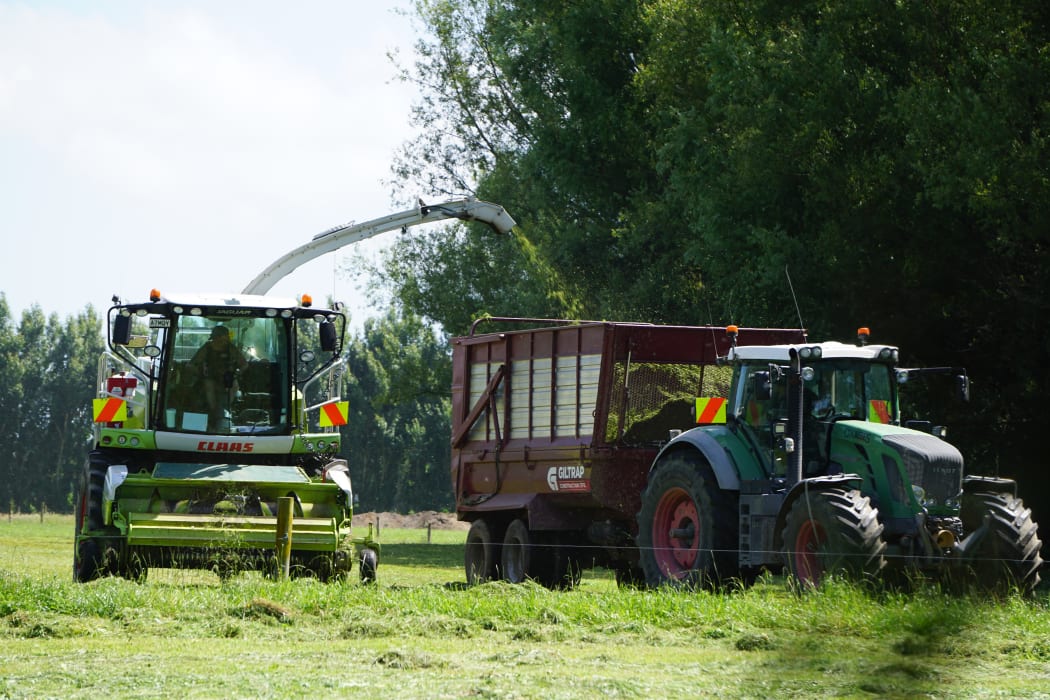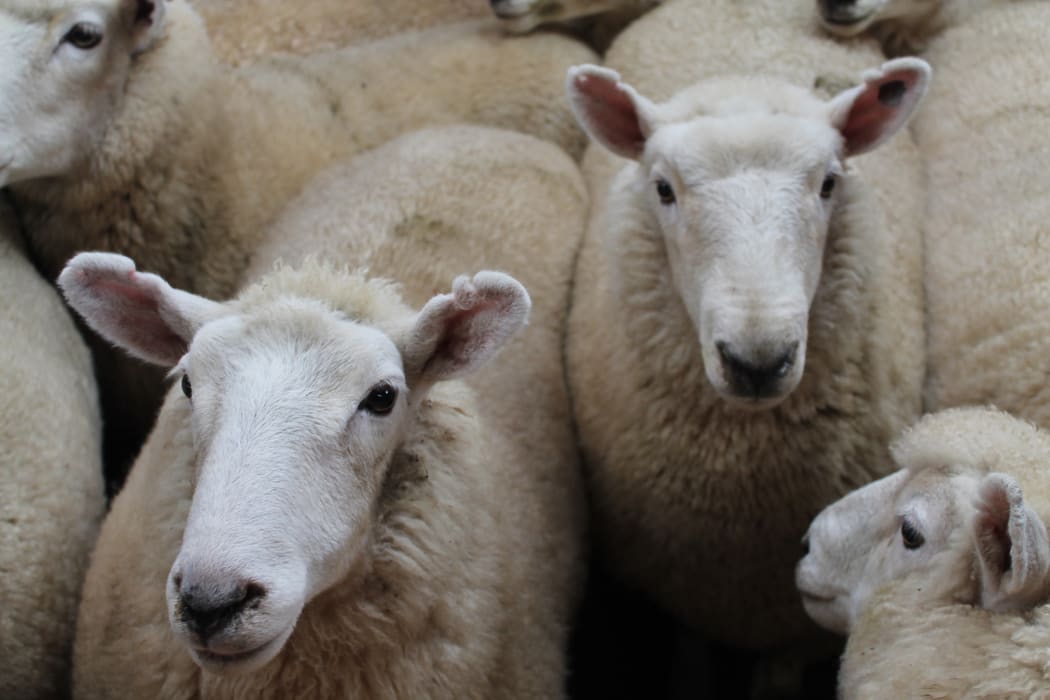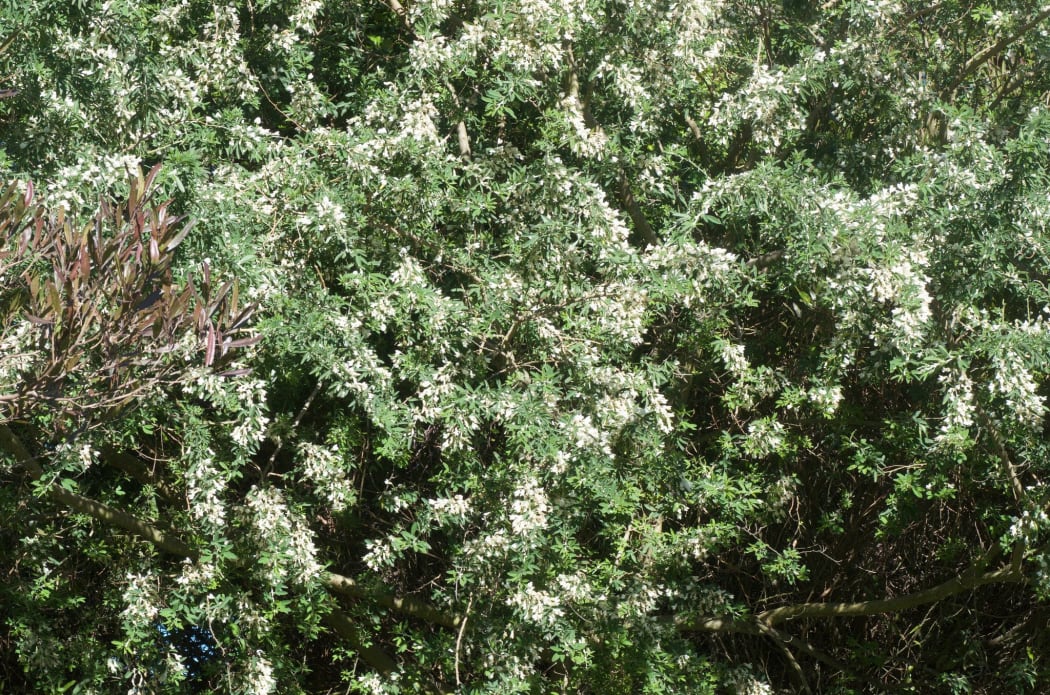
Photo: RNZ/Susan Murray
Both the North and South Islands have been dripping under sweltering temperatures but generally the North Island farms have good amounts of feed. In Canterbury spring barley is going off for Gladfield malt.
Northland is waiting keenly for rain, particularly the eastern coast north of Whangārei. Elsewhere there is still reasonable feed in paddocks and farms are 'hanging in there."
The heat is causing lettuce crops to go slimy in the Franklin district, and onions curing on the paddocks have a high risk of getting sun scald damage, especially the red skinned ones. Mould can then develop on damaged areas. The extreme heat also means yields of later maturing onions will be much lower than normal even if water is available.
Grass cover
Waikato dairy farms on good soils have plenty of grass but heavier clay soils are drying out. Average covers are okay at 1900 to 2100 kilos of dry matter to the hectare. Some early pregnancy testing results show there are more empty cows than desired. Bulls aren't left with the herd for as long these days because farmers want condensed calvings now that cows can't be induced. As one consultant said however, that can't be used as an excuse; they need to manage their farms so they can achieve tighter calvings. Meanwhile, consultant John Hall says he has also helped clients looking at farm purchases recently and there's nervousness around real estate. Budgets need to cope with more milk price volatility than in the past, such as Fonterrra's payout dropping from around $7 to nearer $6.20 this season and no one knows if the co op will pay a dividend in April.
Our farmer in Bay of Plenty says this January has been the second driest in his 27 years of keeping farm records. Luckily Christmas day was very wet. Kiwifruit are liking the heat although they'll be looking for water as soils are dry up to a metre down.
Central Plateau
On the Central Plateau, Taumarunui, Raetihi and down to Taihape, farms are looking great. They have had good rain. But out on the Whanganui /Rangitikei coast it is very dry thanks to nor-west winds. Milk production is hanging in there where herds are being fed crops like rape, chicory and turnips. There's plenty of baleage and silage on farms.
Taranaki had record temperatures inland; over 30 degrees some days. It's getting dry but the region will bounce back quickly if rain arrives soon. January milk production is far better than last year, but some herds had already dried off this time last year because it was so dry.
The weather is only good for swimming in the sea according to our Gisborne consultant, although he says on farm things are chugging along and there's still enough grass for the next few weeks. Crops like tomatoes are being harvested in great conditions. The first of the season’s squash exports to Japan have sailed off. On the negative front there have been a lot of accidents involving cars and logging trucks in the past three months. Trees are being hauled out in huge volumes at present.
Hawke's Bay farms are coping okay for the time of year because the region came into January with good soil moisture levels. The long grass is actually a bit of a fire risk. Store lamb prices are still very high and that's great for the hill country producers for a change. Normally it’s the farmers who finish the lambs that make the better margins.

Photo: RNZ/Carol Stiles
Irrigation systems are busy in Wairarapa and while facial ezcema spore counts have dropped back, as soon as it rains they'll explode as levels had crept up before the dry spell. Fly strike and parasites in general are very challenging. Heat is stressing some cows. Farms with pivet irrigation don't have trees for cows to shelter under.
Horowhenua had drizzle a week ago for a couple of days, then a short burst of intense heat and now it's back to normal temperatures. Farms near the hills received about 30 millimetres of rain, down on the coast it was only 6mm or so.
South Island
Across Cook Strait, the early apple variety Posy is being picked and is off to China and elsewhere. Other apple varieties are looking good but they won't break any size record this year. Irrigation water is restricted so everyone is hanging out for rain. On the labour front one grower says this summer he's had even fewer people than last year looking for seasonal work, but with more RSE workers being allowed into the country now, he's okay for staff.
It's been very very hot in Marlborough - 35 degrees most days - but our contact says "it's just a typical hot Marlborough summer". Plums and other fruit crops are getting badly sunburnt which is a big challenge. Irrigation systems are being shut down until there's rain and, for orchardists without dams to use as a backup, that can be a problem. Water is critical for grapes coming into verasion, or the softening stage.

Flowering Tree Lucerne Photo: Flickr/Jon Sullivan
Canterbury has been sweltering this week which has been fantastic for arable farmers to get their crops harvested. Our contact here is harvesting spring barley which is off to Gladfield malt.
Pasture covers on the West Coast are good. There was a bit of rain for some on Friday morning. One farmer says his herd has gone onto once a day milking and production has not dropped at all. The last of the season's baleage and hay is being cut.
Heat tinge
Central Otago has a brownish green tinge, normally it's just brown by now. One long time farmer says he can't recall seeing it like this for a long time. Lots of baleage and silage is still being made here as well.
North of Gore in Southland it has been baking hot. Combine harvesters have been busy harvesting autumn sown barley - most of it goes as feed for dairy cows. It's also a busy time for shearers - a pretty tough job in this week's temperatures.

